Abstract
Individualized treatment packages were developed for 3 children with high-rate severe pica using a discrimination training paradigm and a behavioral assessment-based procedure known as empirically derived consequences. Children received empirically derived reinforcers for eating under appropriate stimulus conditions (i.e., eating food only from a plate and placemat that served as a discriminative stimulus) and empirically derived punishers for attempts to engage in pica. This treatment package resulted in marked reductions in pica and an increase in appropriate eating for all 3 children in a "baited" analogue condition. In addition, low rates of pica were maintained for 9 months for all 3 children. These results suggest that treatment effectiveness may be enhanced when behavioral assessment data are used to identify potent consequences.
Full text
PDF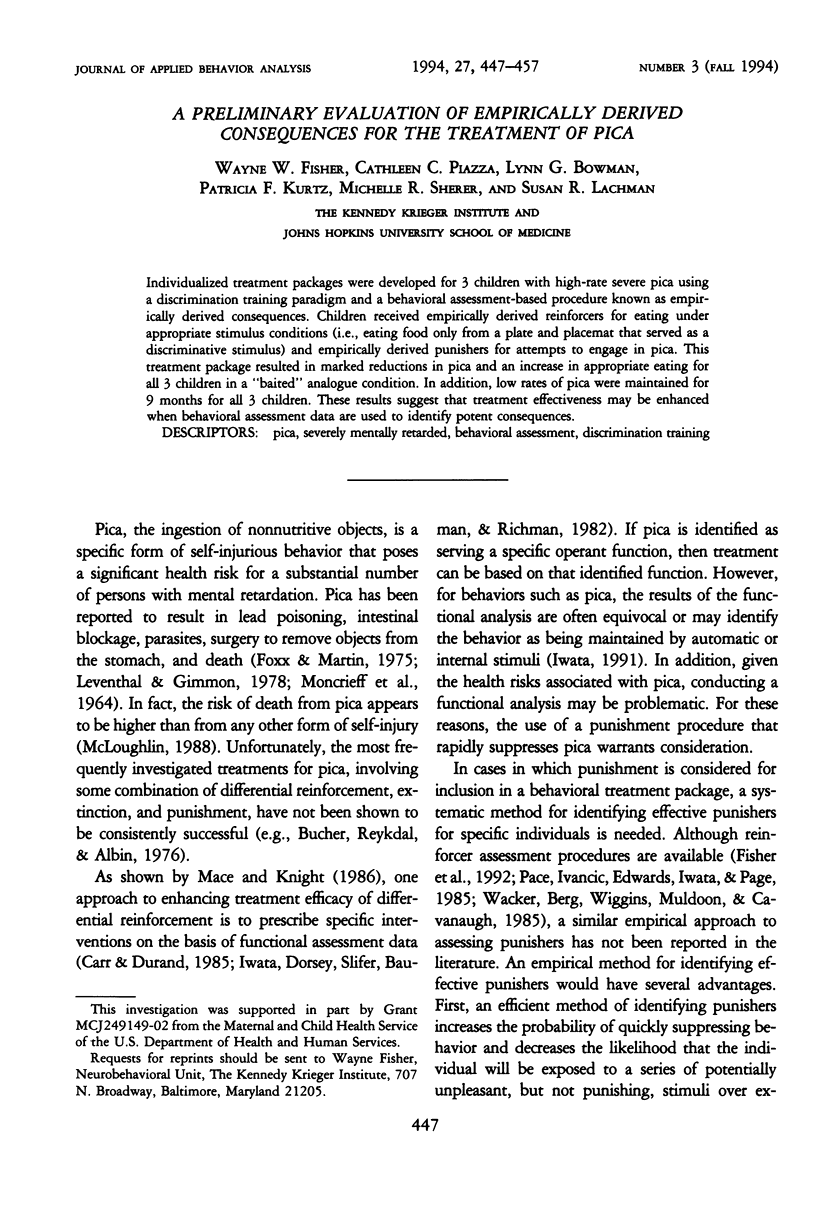
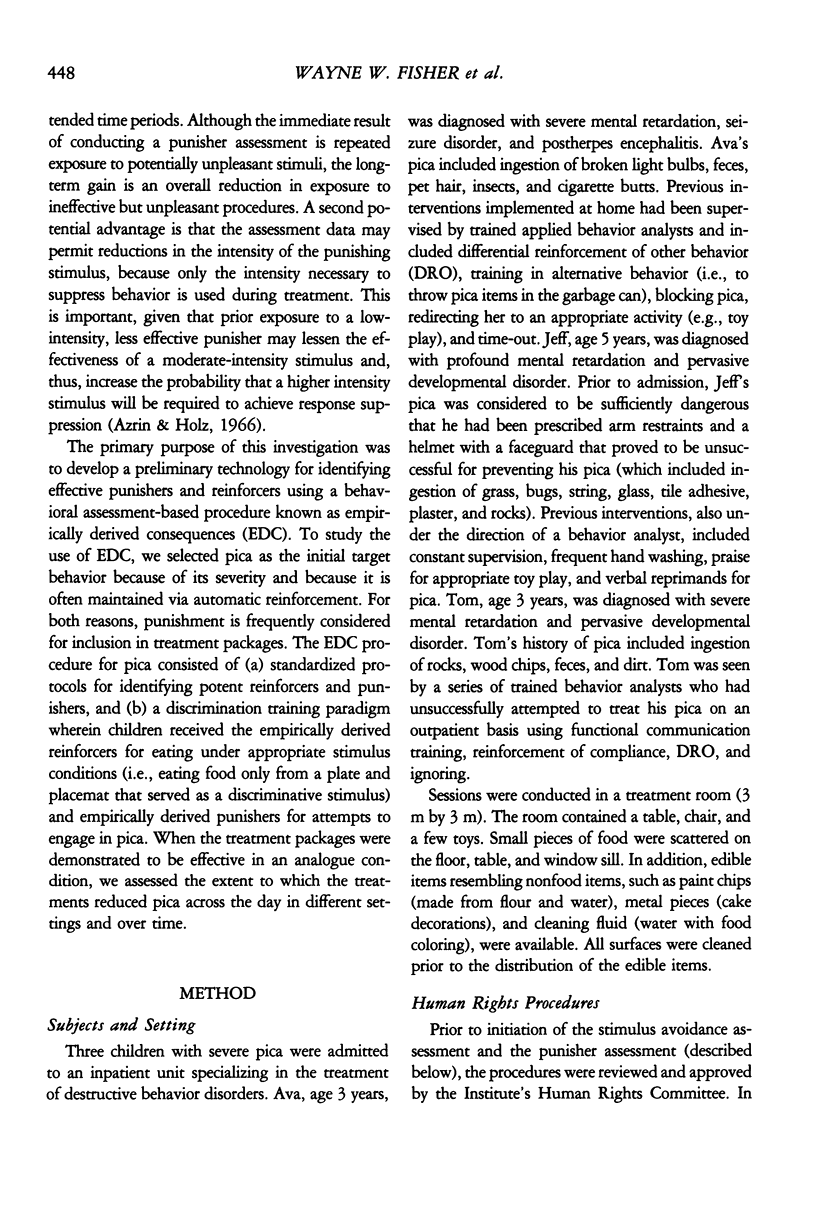
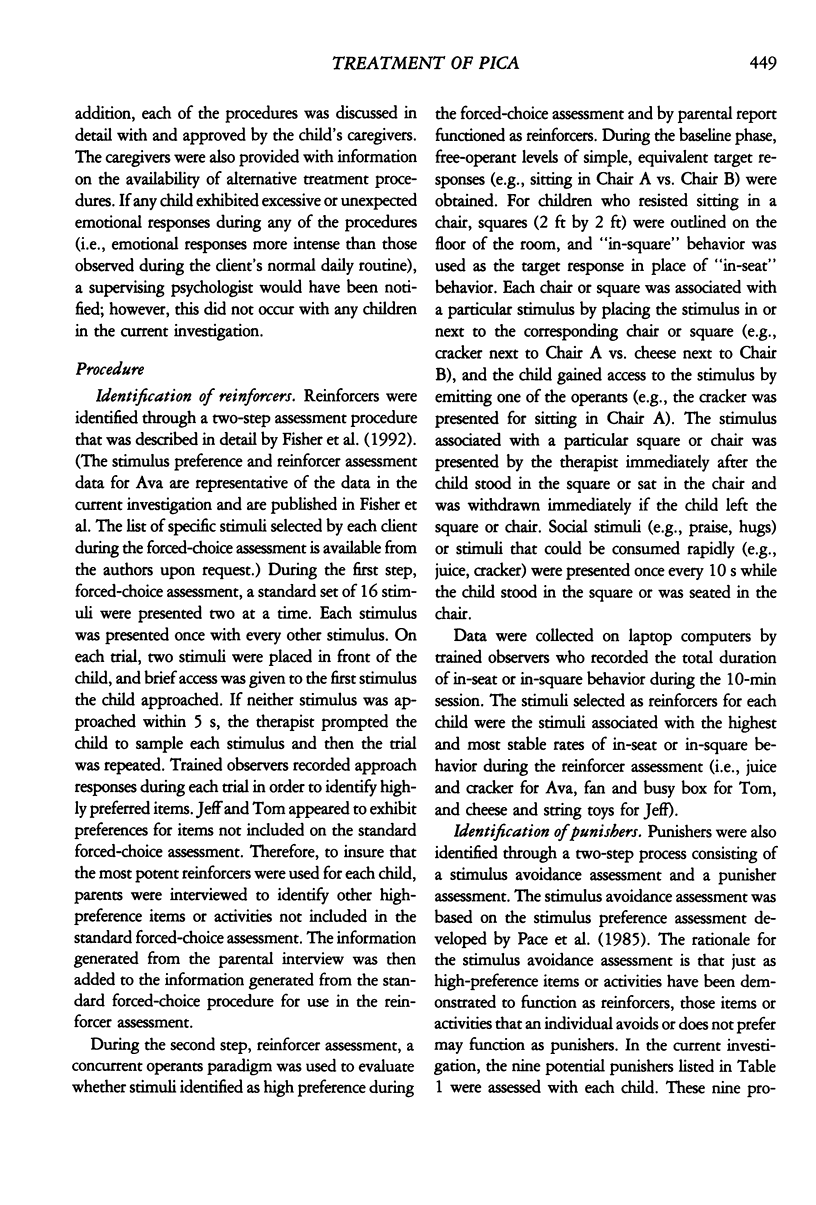
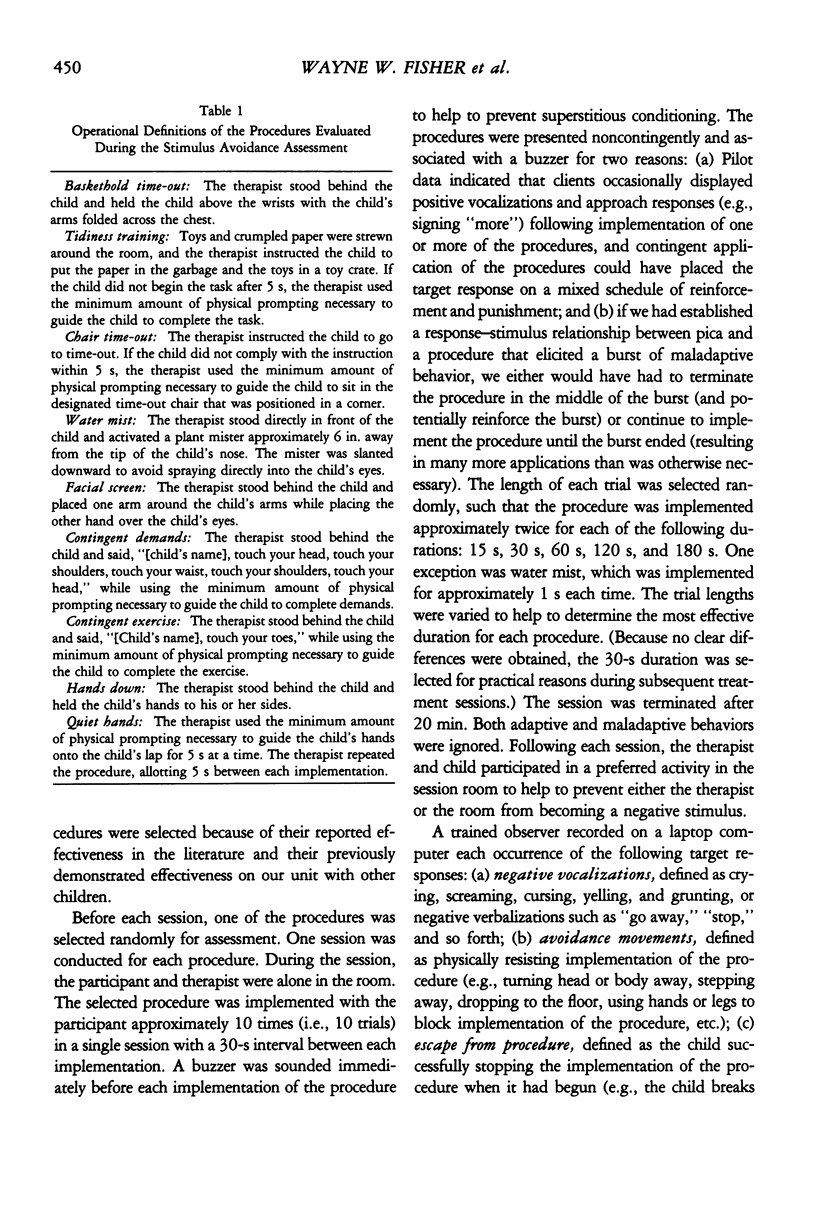
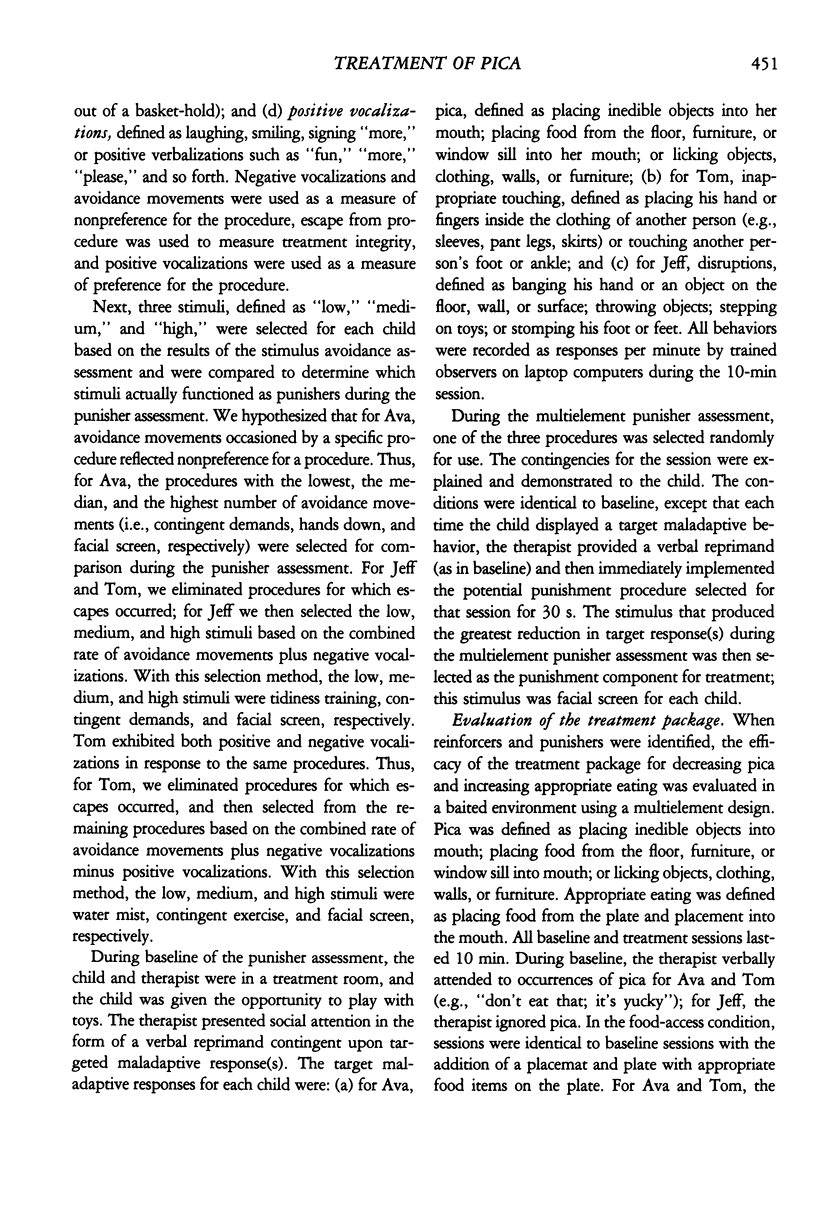
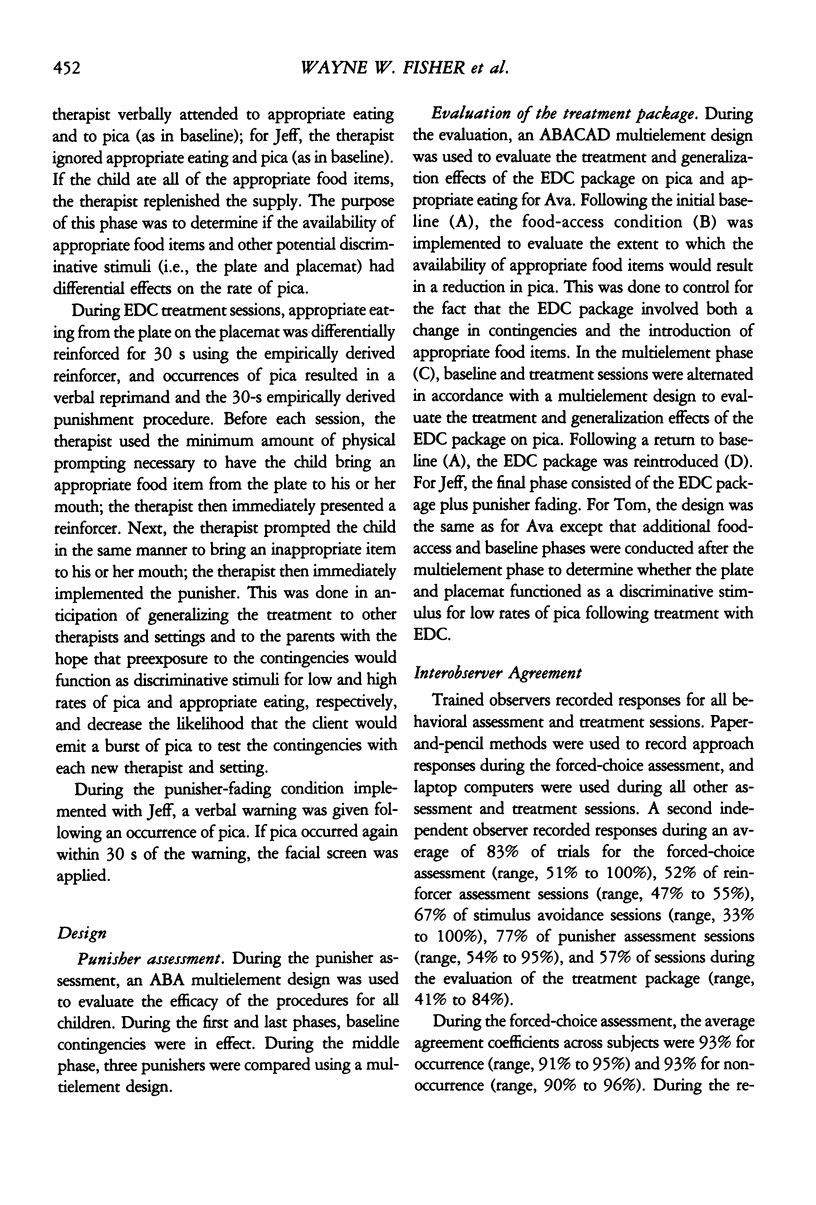
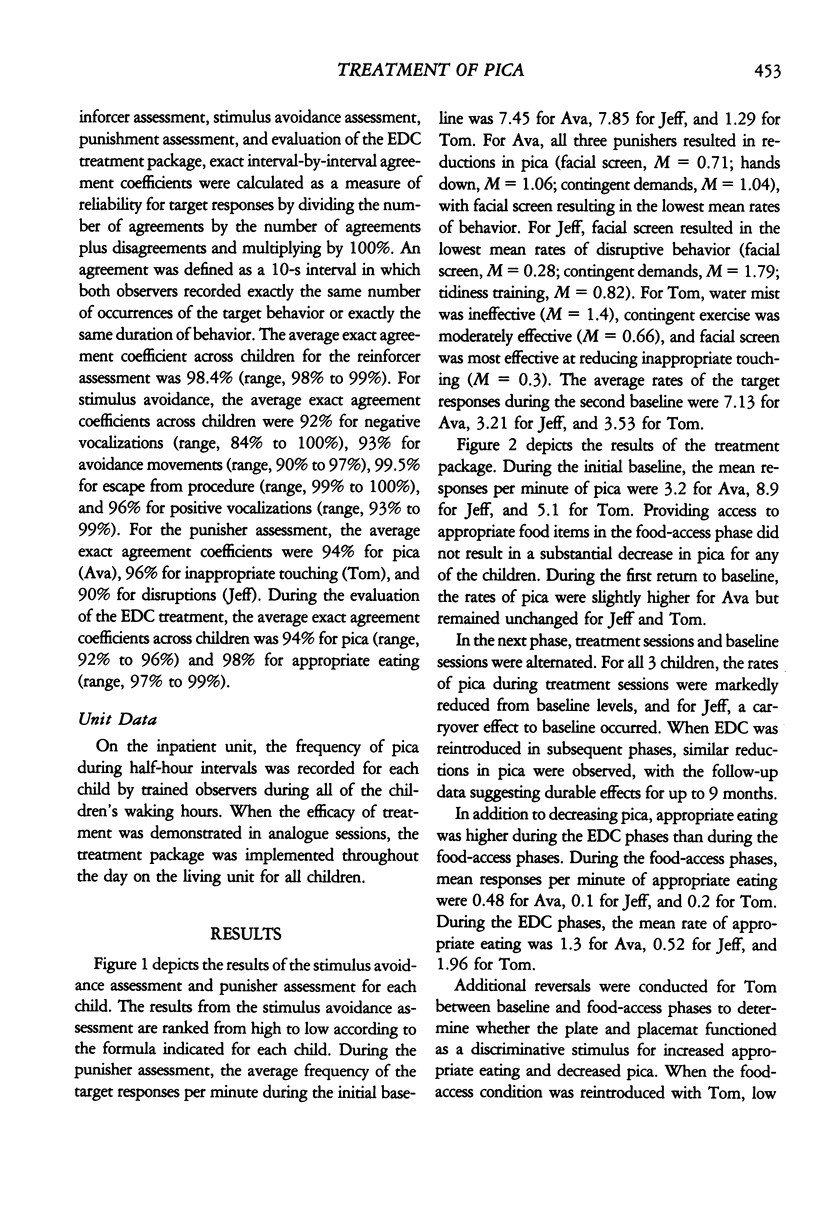
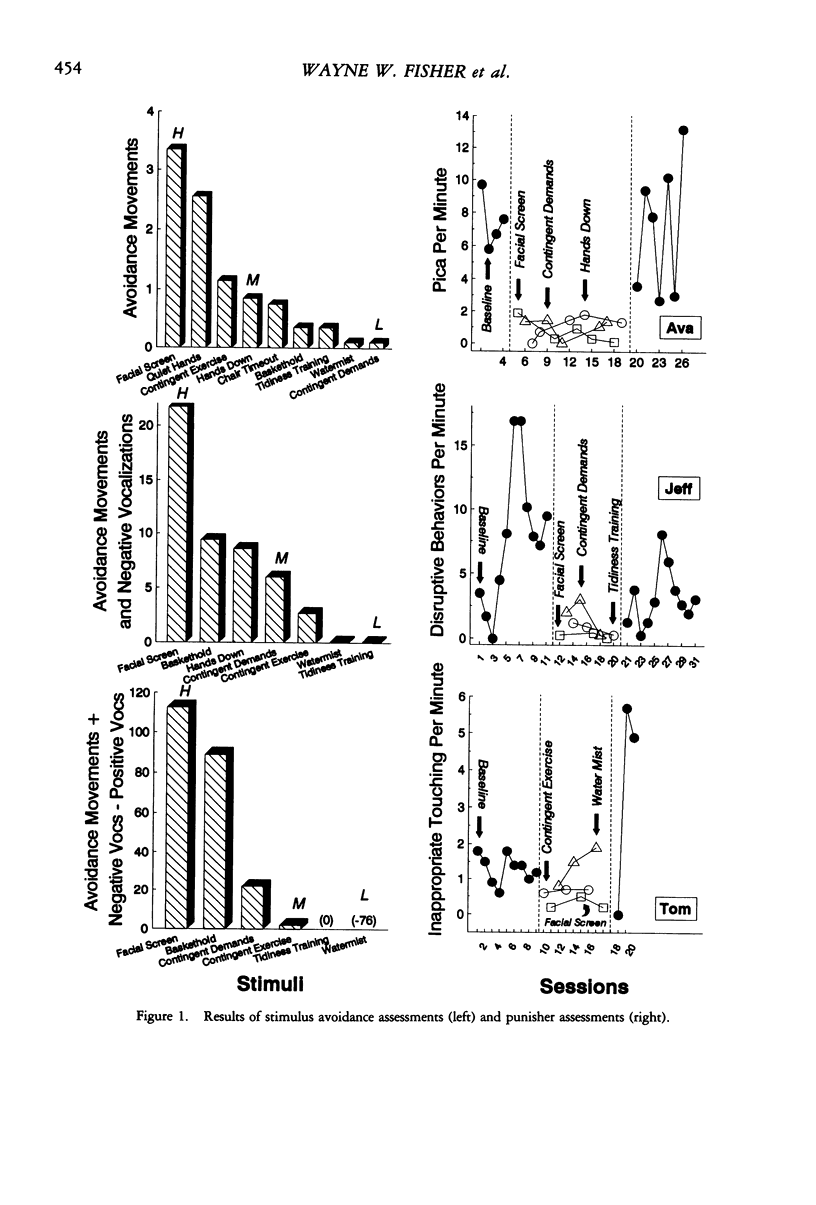
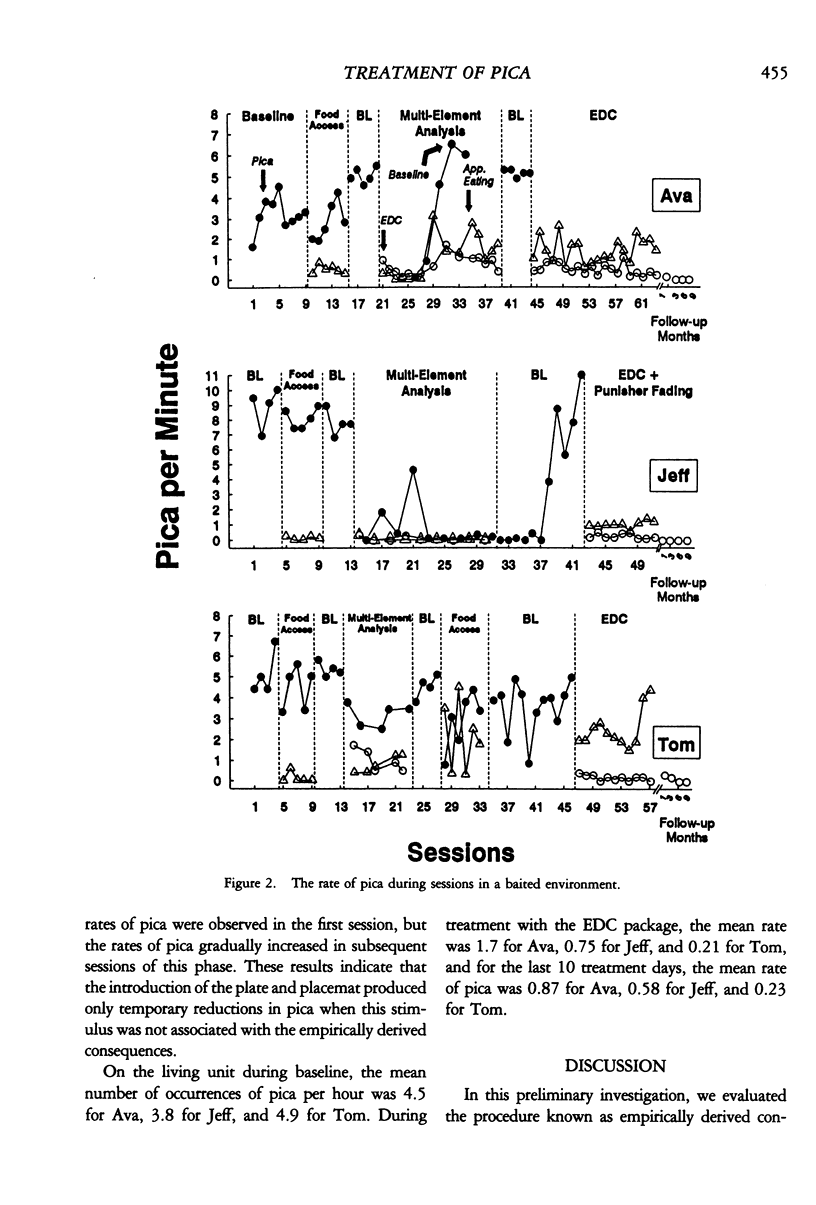
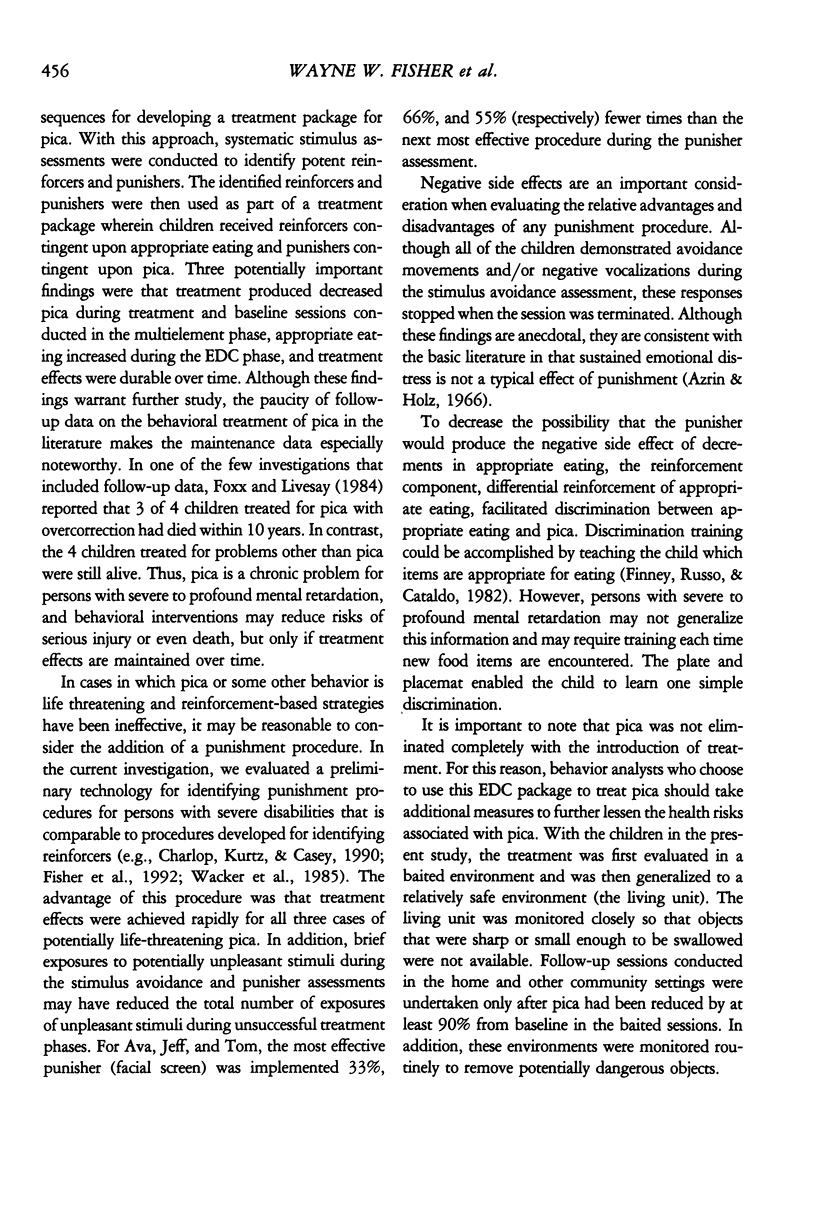
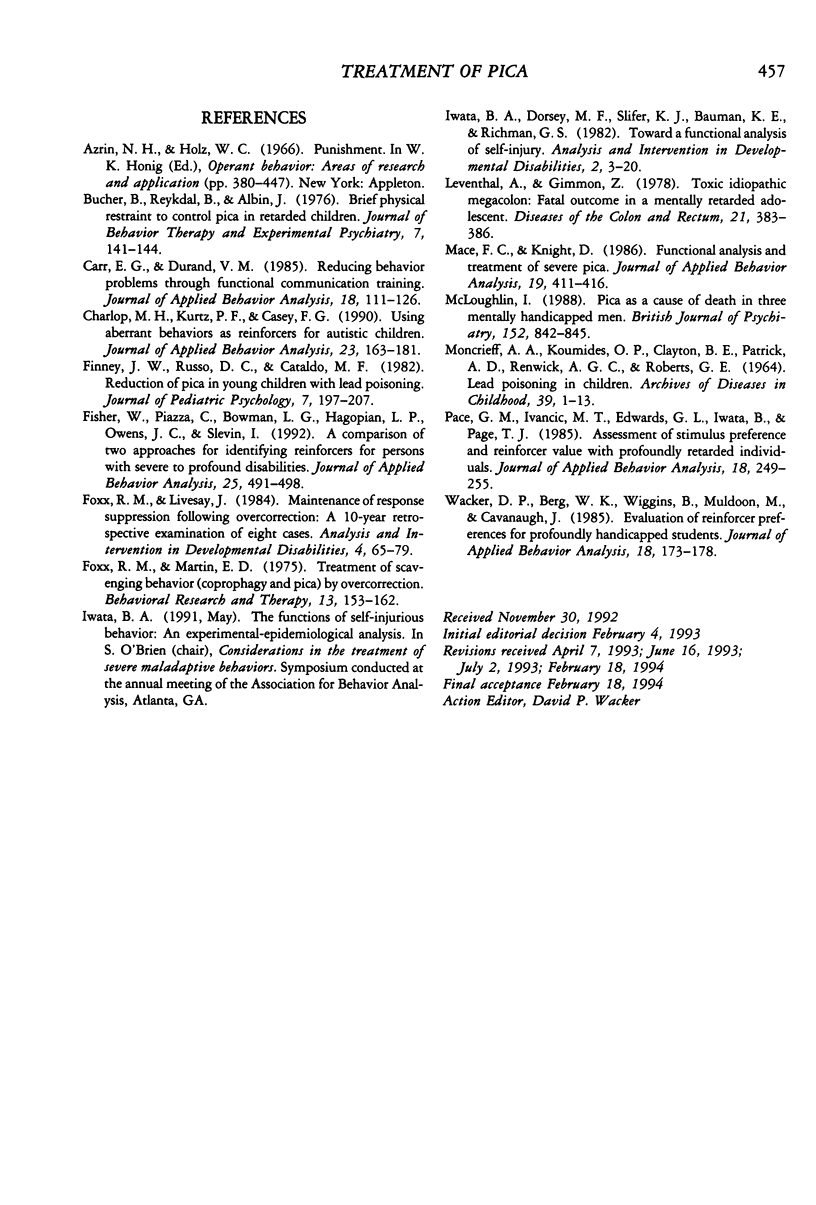
Selected References
These references are in PubMed. This may not be the complete list of references from this article.
- Carr E. G., Durand V. M. Reducing behavior problems through functional communication training. J Appl Behav Anal. 1985 Summer;18(2):111–126. doi: 10.1901/jaba.1985.18-111. [DOI] [PMC free article] [PubMed] [Google Scholar]
- Charlop M. H., Kurtz P. F., Casey F. G. Using aberrant behaviors as reinforcers for autistic children. J Appl Behav Anal. 1990 Summer;23(2):163–181. doi: 10.1901/jaba.1990.23-163. [DOI] [PMC free article] [PubMed] [Google Scholar]
- Finney J. W., Russo D. C., Cataldo M. F. Reduction of pica in young children with lead poisoning. J Pediatr Psychol. 1982 Jun;7(2):197–207. doi: 10.1093/jpepsy/7.2.197. [DOI] [PubMed] [Google Scholar]
- Fisher W., Piazza C. C., Bowman L. G., Hagopian L. P., Owens J. C., Slevin I. A comparison of two approaches for identifying reinforcers for persons with severe and profound disabilities. J Appl Behav Anal. 1992 Summer;25(2):491–498. doi: 10.1901/jaba.1992.25-491. [DOI] [PMC free article] [PubMed] [Google Scholar]
- Foxx R. M., Martin E. D. Treatment of scavenging behavior (coprophagy and pica) by overcorrection. Behav Res Ther. 1975 Jun;13(2-3):153–162. doi: 10.1016/0005-7967(75)90009-1. [DOI] [PubMed] [Google Scholar]
- Leventhal A., Gimmon Z. Toxic idiopathic megacolon: fatal outcome in a mentally retarded adolescent. Dis Colon Rectum. 1978 Jul-Aug;21(5):383–386. doi: 10.1007/BF02586675. [DOI] [PubMed] [Google Scholar]
- MONCRIEFF A. A., KOUMIDES O. P., CLAYTON B. E., PATRICK A. D., RENWICK A. G., ROBERTS G. E. LEAD POISONING IN CHILDREN. Arch Dis Child. 1964 Feb;39:1–13. doi: 10.1136/adc.39.203.1. [DOI] [PMC free article] [PubMed] [Google Scholar]
- Mace F. C., Knight D. Functional analysis and treatment of severe pica. J Appl Behav Anal. 1986 Winter;19(4):411–416. doi: 10.1901/jaba.1986.19-411. [DOI] [PMC free article] [PubMed] [Google Scholar]
- McLoughlin I. J. Pica as a cause of death in three mentally handicapped men. Br J Psychiatry. 1988 Jun;152:842–845. doi: 10.1192/bjp.152.6.842. [DOI] [PubMed] [Google Scholar]
- Pace G. M., Ivancic M. T., Edwards G. L., Iwata B. A., Page T. J. Assessment of stimulus preference and reinforcer value with profoundly retarded individuals. J Appl Behav Anal. 1985 Fall;18(3):249–255. doi: 10.1901/jaba.1985.18-249. [DOI] [PMC free article] [PubMed] [Google Scholar]
- Wacker D. P., Berg W. K., Wiggins B., Muldoon M., Cavanaugh J. Evaluation of reinforcer preferences for profoundly handicapped students. J Appl Behav Anal. 1985 Summer;18(2):173–178. doi: 10.1901/jaba.1985.18-173. [DOI] [PMC free article] [PubMed] [Google Scholar]


